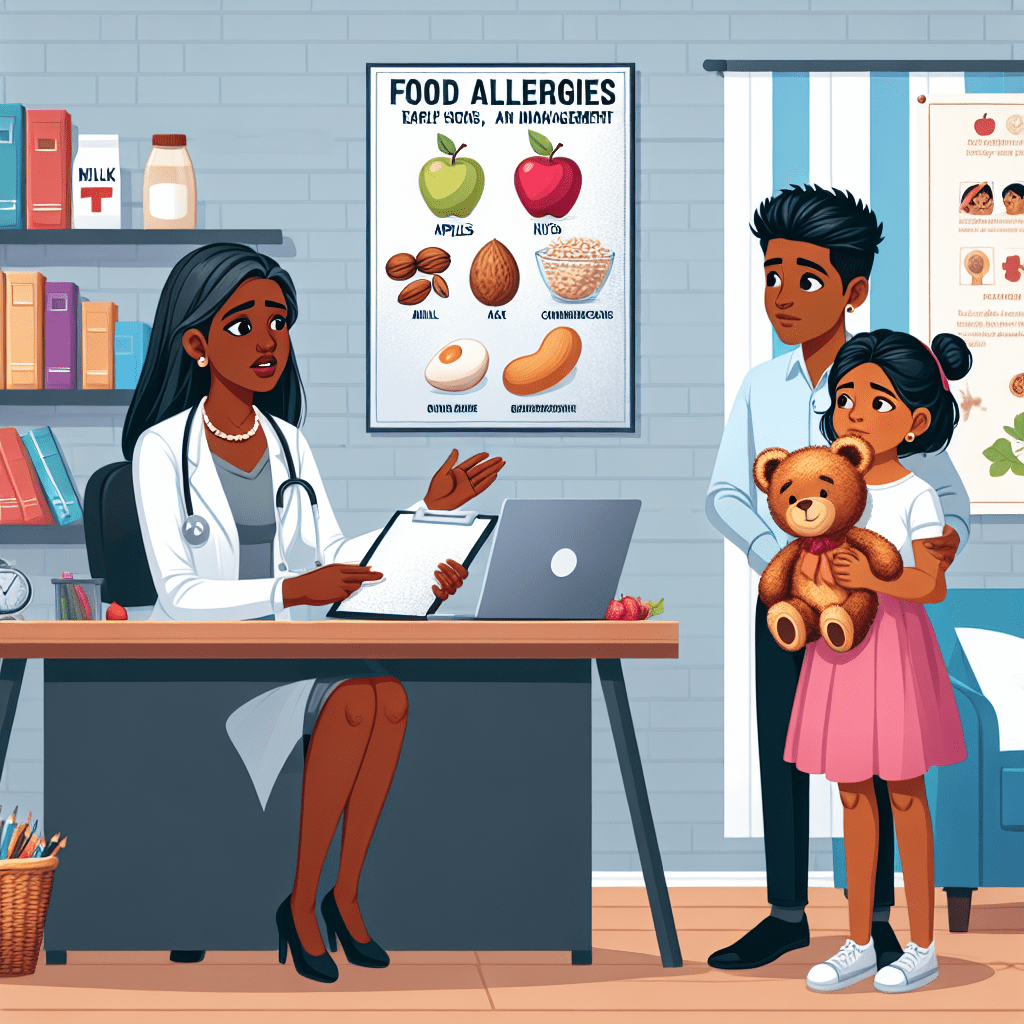[ad_1]
### Food Allergies in Children: Early Signs, Diagnosis, and Management
Food allergies in children are a growing concern worldwide, affecting both the physical health and emotional well-being of children and their families. Recognizing early signs, obtaining a diagnosis, and managing food allergies are crucial steps in ensuring the safety and health of children. This article delves into the signs of food allergies in children, how they are diagnosed, and strategies for managing them effectively.
#### **Early Signs of Food Allergies in Children**
Food allergies in children can manifest in several ways, with symptoms ranging from mild to severe. Parents and caregivers should be vigilant for the following early signs:
1. **Skin Reactions:** One of the most common signs is the appearance of hives, a red, itchy rash, or eczema. These skin reactions can occur within minutes to a few hours after consuming the allergen.
2. **Gastrointestinal Symptoms:** These include abdominal pain, vomiting, nausea, and diarrhea. In infants, this may also appear as colic or an inability to settle.
3. **Respiratory Issues:** Symptoms can range from a runny nose and sneezing to more severe reactions like wheezing and difficulty breathing, particularly if the child has asthma.
4. **Anaphylaxis:** This severe, life-threatening reaction can include symptoms such as swelling of the throat and mouth, difficulty breathing, a sudden drop in blood pressure, and dizziness or fainting. Immediate medical attention is crucial if anaphylaxis occurs.
#### **Diagnosis of Food Allergies in Children**
Should you suspect your child has a food allergy, the next step is to seek a professional diagnosis. This process typically involves:
1. **Detailed Medical History:** A healthcare provider will begin with a thorough examination of the child’s medical history, including the specific symptoms experienced and the timing related to food intake.
2. **Elimination Diets:** In some cases, especially with gastrointestinal symptoms, an elimination diet may be recommended, where the suspected allergen is removed from the diet, then gradually reintroduced under medical supervision.
3. **Skin Prick Tests:** This test entails placing a small amount of the suspected allergen on the skin, then pricking the skin to allow it to enter. A reaction indicates a possible allergy.
4. **Blood Tests:** These measure the immune system’s response to specific foods by looking for the presence of allergy-related antibodies.
5. **Oral Food Challenge:** Conducted under strict medical supervision, this test involves ingesting the suspected allergen in increasing amounts to observe for any allergic reaction.
#### **Management of Food Allergies in Children**
Once a food allergy is diagnosed, a clear management strategy is vital. Here’s how parents and caregivers can navigate the challenge:
1. **Avoidance:** The primary treatment for food allergies is the complete avoidance of the allergen. This requires reading food labels carefully, being aware of cross-contamination risks, and educating anyone involved in the child’s care about their allergies.
2. **Emergency Plan:** Develop an emergency action plan for accidental exposure. This plan should include steps to take in case of an allergic reaction, including the use of antihistamines for mild reactions or an epinephrine auto-injector (like an EpiPen) for severe reactions.
3. **Dietary Management:** For allergens that are major nutrients, such as dairy or eggs, seek advice from a dietitian to ensure nutritional needs are met with alternative sources.
4. **Education:** Educate the child, as age-appropriate, on their allergies, symptoms of a reaction, and safety measures, including how to use an epinephrine auto-injector if needed.
5. **Advocacy:** Work with schools, camps, and other caregivers to ensure they understand the child’s allergies and have protocols in place to manage them, including avoiding cross-contamination and recognizing and responding to an allergic reaction.
Managing food allergies in children also involves regular follow-ups with healthcare providers since children may outgrow certain allergies.
### FAQs
**Q: Can you prevent food allergies in children?**
A: Current research suggests that introducing allergenic foods early, around 4-6 months, in age-appropriate forms, may reduce the risk of developing food allergies, particularly for high-risk infants. However, prevention strategies may vary, so consult a healthcare provider for personalized advice.
**Q: How can I tell if my child’s reaction is an emergency?**
A: Any sign of anaphylaxis, such as difficulty breathing, swelling of the mouth and throat, or a significant drop in blood pressure, is an emergency requiring immediate medical attention.
**Q: Will my child outgrow their food allergy?**
A: Many children outgrow food allergies, particularly those to milk, eggs, wheat, and soy. However, allergies to nuts, fish, and shellfish are more likely to be lifelong. Regular evaluations by a healthcare provider are essential to assess whether an allergy persists.
**Q: Can food allergies be cured?**
A: Currently, there is no cure for food allergies, though treatments such as oral immunotherapy, which involves ingesting small, gradually increasing amounts of the allergen under medical supervision, show promise in increasing tolerance.
**Q: Is there a difference between food allergies and food intolerances?**
A: Yes. Food allergies involve the immune system and can be life-threatening, while food intolerances generally do not involve the immune system and are less severe, often resulting in digestive problems rather than anaphylaxis.
Understanding the early signs, obtaining a correct diagnosis, and implementing a comprehensive management plan are critical steps in safeguarding children with food allergies. Through vigilant care, education, and ongoing medical support, children with food allergies can lead healthy, active lives.
[ad_2]

Leave a Reply